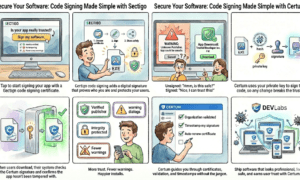Banks are continuously looking for ways to streamline operations, enhance customer service, and ensure security. With technological advancements, the demand for new software solutions has grown exponentially, making it essential for banks to adopt modern tools that cater to their unique needs. However, with so many software options available, it’s crucial to select solutions that not only meet regulatory standards but also improve the efficiency of everyday operations. This post explores the top features that every bank should look for when selecting new software solutions.
Advanced Security Features
Security is one of the most critical aspects of banking software, as financial institutions are prime targets for cybercriminals. With the rise in phishing attacks, ransomware, and data breaches, banks must implement strong security measures to safeguard sensitive information. Key security features to look for include end-to-end encryption, which protects data in transit and at rest, and multi-factor authentication (MFA) to ensure that only authorized users can access the system.
Real-time monitoring tools help detect suspicious activities before they escalate into major threats. Banks should choose software that provides regular security updates and automatic patches, ensuring protection against the latest vulnerabilities and strengthening the overall security infrastructure of the organization.
Compliance with Regulatory Standards
Regulatory compliance is a non-negotiable requirement in the banking sector, as financial institutions must adhere to strict legal frameworks to protect customer data and maintain financial stability. Banks should ensure that their software solutions comply with key regulations, including the General Data Protection Regulation (GDPR), Payment Card Industry Data Security Standard (PCI DSS), and Anti-Money Laundering (AML) guidelines. Compliance-friendly software should include automated reporting tools that simplify audits and regulatory filings.
Built-in risk management features can help banks track and mitigate compliance risks in real-time. Investing in software that continuously updates to meet evolving regulations can save banks from costly penalties while fostering customer trust and operational transparency.
Cloud-Based Architecture
Cloud-based architecture has become a game-changer for banks, offering flexibility, scalability, and cost efficiency. One major advantage of modern cloud solutions is the use of open-source databases, which provide greater customization, lower costs, and enhanced security.
Unlike proprietary systems, open-source databases allow banks to adapt and scale their software without vendor lock-in. Many financial institutions now leverage White label bank software, which integrates seamlessly with cloud infrastructure, enabling faster deployment and personalized banking services. Cloud-based solutions ensure real-time data access, automatic backups, and improved disaster recovery, making banking operations more resilient. As financial technology evolves, cloud-based platforms will remain essential for secure, efficient, and customer-focused banking solutions.
Integration Capabilities
A modern bank relies on multiple digital systems for various functions, such as transaction processing, customer relationship management (CRM), and fraud detection. To avoid inefficiencies and data silos, banks should choose software that offers seamless integration with existing platforms. API-based solutions allow for smooth data sharing between systems, enabling a more connected banking experience. Effective integration minimizes manual data entry errors and ensures consistency across different departments.
Compatibility with third-party applications such as accounting software, AI-driven analytics, and payment gateways can further enhance banking services. By prioritizing integration capabilities, banks can streamline their operations, reduce downtime, and provide customers with faster, more reliable financial services.
User-Friendly Interface
A well-designed user interface is crucial for both employees and customers to efficiently navigate banking software. A complicated or outdated interface can lead to errors, frustration, and reduced productivity. Banks should invest in software that offers an intuitive and user-friendly design, making essential functions easily accessible. Features such as customizable dashboards, clear navigation menus, and drag-and-drop tools improve usability.
Responsive design ensures a seamless experience across desktops, tablets, and mobile devices. Minimal training requirements for staff reduce onboarding time and operational disruptions. By prioritizing an accessible and modern interface, banks can enhance efficiency, customer satisfaction, and overall adoption of digital banking solutions.
Scalability and Flexibility
As banks expand their services, they require software that can scale with their growth without requiring costly replacements. A scalable banking solution should handle increasing transaction volumes, new product offerings, and additional user accounts without performance issues. Cloud-based platforms are particularly beneficial for scalability, allowing banks to upgrade storage, processing power, and functionalities on demand.
Flexibility is also essential, as evolving regulations and customer expectations necessitate continuous adaptation. Banks should seek software that supports modular upgrades, enabling them to implement new features without disrupting existing operations. Scalable and flexible solutions help financial institutions remain competitive while efficiently managing growth and operational changes.
Selecting the right software solution for a bank is a complex decision that requires careful consideration of several key factors. From robust security features and compliance with regulations to seamless integration and scalability, the right software can streamline operations, enhance customer experiences, and ensure long-term success. By focusing on the features outlined above, banks can make informed decisions that meet both their immediate needs and future growth objectives.






























